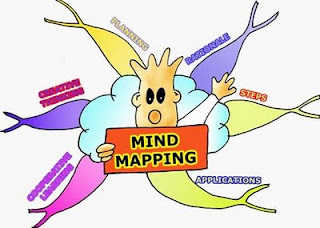We teachers get the opportunity to participate in workshops, seminars or training sessions to improve teaching skills on regular basis. Effective use of eye contact is part of 'classroom management' techniques which every teacher should learn.
Eye contact is a very important non-verbal teaching technique, which not only
enhanced students’ attention in the classroom but also helps teachers in the attainment of desired student results.
Efficient use of eye contact in the classroom as a non verbal teaching tool:

In classroom, eye contact performs a very significant function as non-verbal communication.
Eye contact makes so much difference: if students feel that the teacher is actually talking and engaging with them, they are more likely to engage with teacher and listen what they’re saying.
Eye contact also helps to convey that all-important enthusiasm and passion that can bring the topic to life.
Teachers can use eye contact for the enhancement of learning of the students in various ways.
Wainwright also highlighted six different functions of eye contact: seeking information;
showing attention and interest; inviting and controlling interaction; dominating, threatening and
influencing others; providing feedback during speech; and revealing attitude.
Teachers often complain about discipline, about lack of attention, about the use of L2 in the classroom and many other problems, many of which amount to a breakdown in communication between teacher and students or between students themselves. It is well known that speech is only one part of communication, yet teachers often forget about or underestimate the importance of non-verbal communication in their own and their students' performance.

One aspect of non-verbal communication is the use of the eyes to convey messages. The eyes are a powerful tool for both the teacher and the learner, yet much classroom time is spent with eyes firmly fixed on the book, the board, the floor, the window, or roaming randomly around the teaching and learning environment.
Teachers working in all disciplines in secondary schools have always been advised to develop 'the look' as part of their teaching persona. 'The look' ranges from 'be quiet please', through 'I'm not going to tell you again' to 'don't mess with me, sonny', and in this respect is seen as having a disciplinary function. Meanwhile, the business world has accepted eye contact as an important component of achieving success in giving presentations and improving rapport between representative and client, while these days it is possible to find many websites offering advice on how to forge personal relationships through the judicious use of eye contact.
Researchers and practitioners in Neuro-Linguistic Programming (NLP) have brought the notion of body language and eye contact back to the attention of language teachers, but largely in the context of providing clues to the nature of the learner rather than in terms of a teaching tool.
Establishing a management role in the classroom involves eye contact from the outset.
- Be in your classroom before your learners, and welcome them individually with a combination of eye contact and their name as they enter the room.
- Talk to your learners, not to the book, the board or the screen.
- Eyes can set the tone of a lesson. As the lesson starts, walk around the room looking to check whether the learners are ready -- books out, pens and paper handy, mobile phones off.
- If not, eye contact should suffice to rectify the situation.
Try teaching part of a lesson without saying anything. This should remind you of how important paralinguistics is as well as helping to control your teacher talking time.
Good eye contact does not mean staring or gazing. Many learners are likely to find this uncomfortable and consequently avert their own eyes and lose concentration.
Neither does good eye contact mean eyes darting from learner to learner around the room -- this has no effect whatsoever.
- It is recommended that there should be three to five seconds eye contact for non-verbal communication to take place.
Watch your learners as well as listen to them, particularly while they are performing tasks. Look for signs of being bored or being lost.
- Encourage your learners to make eye contact while they are working together in pairs or groups. Start by training them to listen to each other using non-verbal responses only.
- Research shows that there is a strong link between the amount of eye contact people receive and their degree of participation in group communication -- in the number of turns taken in a group conversation for example.
The NLP(Neuro-Linguistic Programming) approach to eye contact is holistic and individualistic, but is soundly based on the premise that good eye contact increases rapport.
Save time and effort with specific messages delivered by eye and facial expression.
Show praise, encouragement often, and disapproval occasionally.
Remind learners that they ought to know an answer or that they could provide a response if they tried.
Use eye contact as a correction technique.
Nominate and invite responses by eye. If the nominee is not watching, someone will give him/her a nudge.
Eye contact is, fundamentally, time and effort saving.
Teachers can use their body movements, eye contact, facial expressions; smile; anger; frown, pitch
of voice, and spatial distance for better understanding of the concepts of students.
In the classroom setting eye contact of the teacher, as non-verbal cue, is very vital and directly
affects the learning of the students in addition to the classroom management. Eye contact is a tool of
teaching, which a teacher can use very efficiently and effectively for the enhancement and achievement of
students’ learning outcomes (SLOs)
More reading and useful links:
*
Eye contact as an efficient non verbal teaching technique
*
Eyes Talk
Hongshen ZHANG
Fujian University of Technology
* The Importance of Eye Contact in the Classroom
* Non verbal communication (An article at 'Teaching English-BBC)
* Body Language- Speaking without words





































